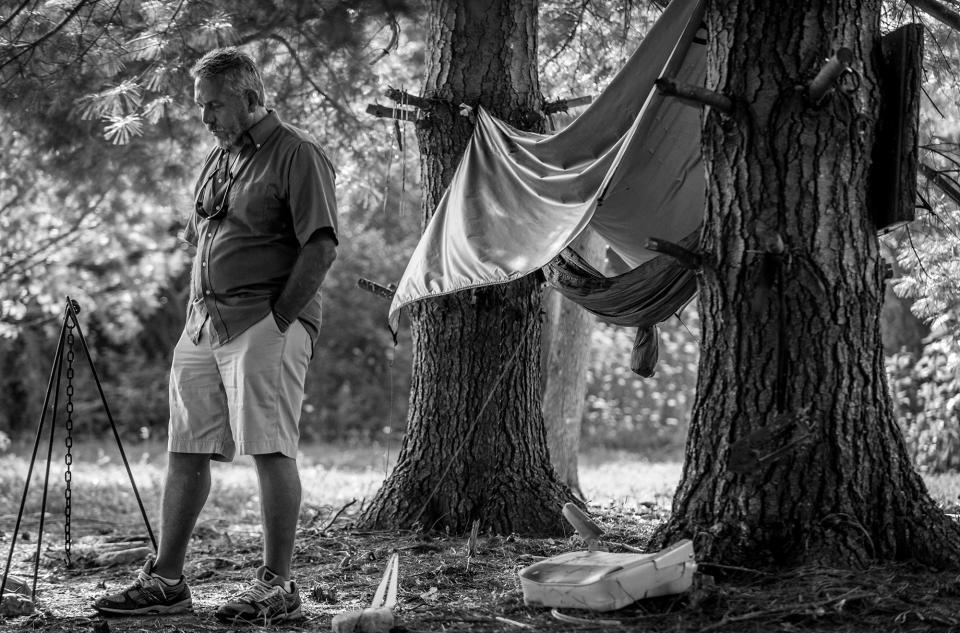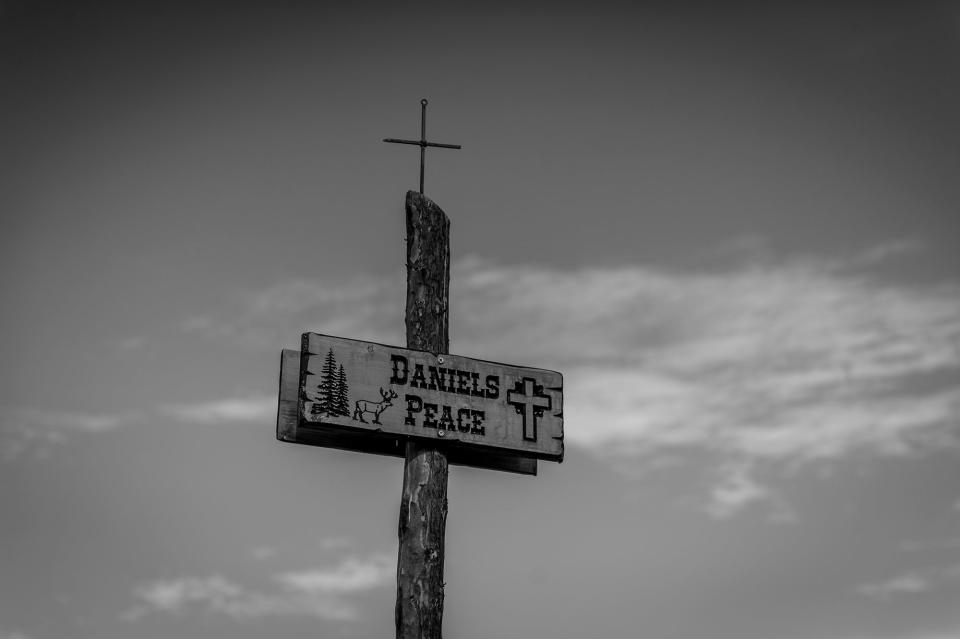Addicts, families, doctors, cops all wonder: What works? Where do we go from here?
The opioid epidemic is a national crisis. But what does that mean? To answer that, Yahoo News traveled to Middletown, Ohio — a city once considered as ordinary as its name, more recently known for an explosion in opioid use — and explored quantitative research about drugs, health care, and national public opinion. This is a problem so serious that it requires big data, so human that it needs a face. Here is what we found:

Over years of hard work, Scott Weidle built up the Weidle Corporation — a sand, gravel and topsoil company in Germantown, Ohio — so he could pass it down to his son. But the day after Christmas in 2015, 30-year-old Daniel Weidle died of a heroin overdose. He was alone in his apartment. A prescription for pain pills had turned into addiction; inpatient therapy failed to keep him off drugs permanently; treatment with the opioid-blocker Vivitrol seemed to have worked a miracle until Daniel’s doctor left town without warning and his prescription ran out. The Weidles scrambled to find a new doctor to administer the monthly shot. They were turned away four times.
Scott’s sister-in-law Beth Genslinger deals with the loss of her son to heroin through community and communication. Scott looks for solutions. He argues that this is a solvable problem: “We have to stop the overexposure to medical opioids.” Since his son’s death, Scott Weidle has dedicated himself to lobbying Columbus for new legislation — in the form of the newly proposed Daniel’s Law — on opioid prescriptions, as well as increased treatment availability. But in Ohio, overprescription continues to be a problem.
Where do we go from here? Scott is rare for the clarity he brings to that question. The problem is daunting. It touches on any number of hot-button social issues: medicine, law, labor, economics, law enforcement. The cycle of addiction is too powerful. The costs appear prohibitive.

Slideshow: In Middletown, addiction’s toll: Faces, places — and headstones >>>
Clean for one month, eight months, and the better part of 18, respectively, Larry Fugate, Jack Barrett and Gene Robinson all stress the need for treatment. That means medicine: Suboxone or Vivitrol. It also means social support — for Jack, the tightknit community at Groups, his treatment center; for Gene, a fiancée who makes sure he takes his pills. They cite new centers, counseling services and helplines popping up in and around Middletown as signs of hope. But these work only for those who want treatment. A user has to have hit rock bottom before seeking help, Gene says. “You just hope rock bottom isn’t death.”
They are less certain when it comes to goals, and they don’t talk about costs. Jack is looking for jobs. Mostly he just wants to stay clean. What does he do with his time? “I mow the grass — try to stay busy.” Larry is interviewing with AK Steel. His mother hopes that he gets the night shift. It means he won’t have time to hang out with “people from the past.” And she worries even about that: AK Steel is not an easy place to work. An ex-boyfriend died of black lung from particulate exposure.
Jack, Larry, and Gene all rely on Medicaid for their treatment. “Trump’s going to be taking it away from us,” says Gene. “And then what’s going to happen to us?” They want to be able to pay back into the system. But for now, they can’t. The Groups executive director, Jeremy Carpenter, admits that in this world, “success is a very subjective term.”

And not everyone even believes in the possibility of success. Richard K. Jones, the Butler County sheriff is controversial for his hardline stance on immigration — and, more recently, for prohibiting his officers from carrying the anti-overdose drug Narcan. “I feel it’s dangerous,” he says. “You have to get down on your knees.” He says victims don’t like the police and might be violent (although overdose victims are more likely to be groggy and lethargic). His officers’ “job is not to die for this person who chose to shoot drugs.” Jones also insists that treatment has no effect. “They’ll tell you how successful they are. They aren’t.” According to him, we can’t save the addicts. The only option is prevention — education, crackdown on suppliers, a border wall. (When Scott Weidle hears this he snorts: “Trump’s wall is not going to do a damn thing about it.” He argues that drug traffickers just mail the drugs. “They’ll fly right over the wall.”)
Does Middletown just wait — and hope? Under a thin layer of obfuscation, that seems to be what Mayor Mulligan suggests. He’ll keep hosting summits and funding overdose runs, as he has for the better part of the past four years. But — as with crack and meth before — this epidemic will just have to run its course. At the fire station, the captain says, sighing: “I don’t know if there’s an answer.” All he can do is keep showing up, keep saving people and keep hoping that something works.

The one thing everyone — the sheriff included — agrees on is the need for public education. People need to know what addiction looks like and how easily it happens. But education can go only so far. Over free breakfast at a local church, a slouching woman explains that she grew up in a family of users. She watched them tear their lives apart. She promised herself that she would never do drugs. But then her mother died. She was being molested. She was suicidal. Her uncle sold heroin: It was an easy escape. Now she is in intensive outpatient treatment. She has three children. She hopes that they will learn from her example not to use.

Standing outside the memorial park that they have built for Daniel, Scott Weidle and his wife, Carrie, stress that this is a human tragedy — and a disease — that we cannot ignore. They believe you have to keep fighting the battle, with whatever it takes. The only people who feel otherwise are those who haven’t been affected personally. “But,” Carrie sighs, “they will be.”
_____
Emily de La Bruyère has written for the Wall Street Journal, the New York Times, the Huffington Post, and the Daily Beast. She is a student at Sciences Po in Paris on the Michel David-Weill fellowship.
Middletown, Ohio, a city under siege: ‘Everyone I know is on heroin’ >>>
Behind the white picket fences, heroin >>>
For taxpayers, the drug epidemic’s bills come due >>>
Photos: In Middletown, addiction’s toll: Faces, places — and headstones >>>


